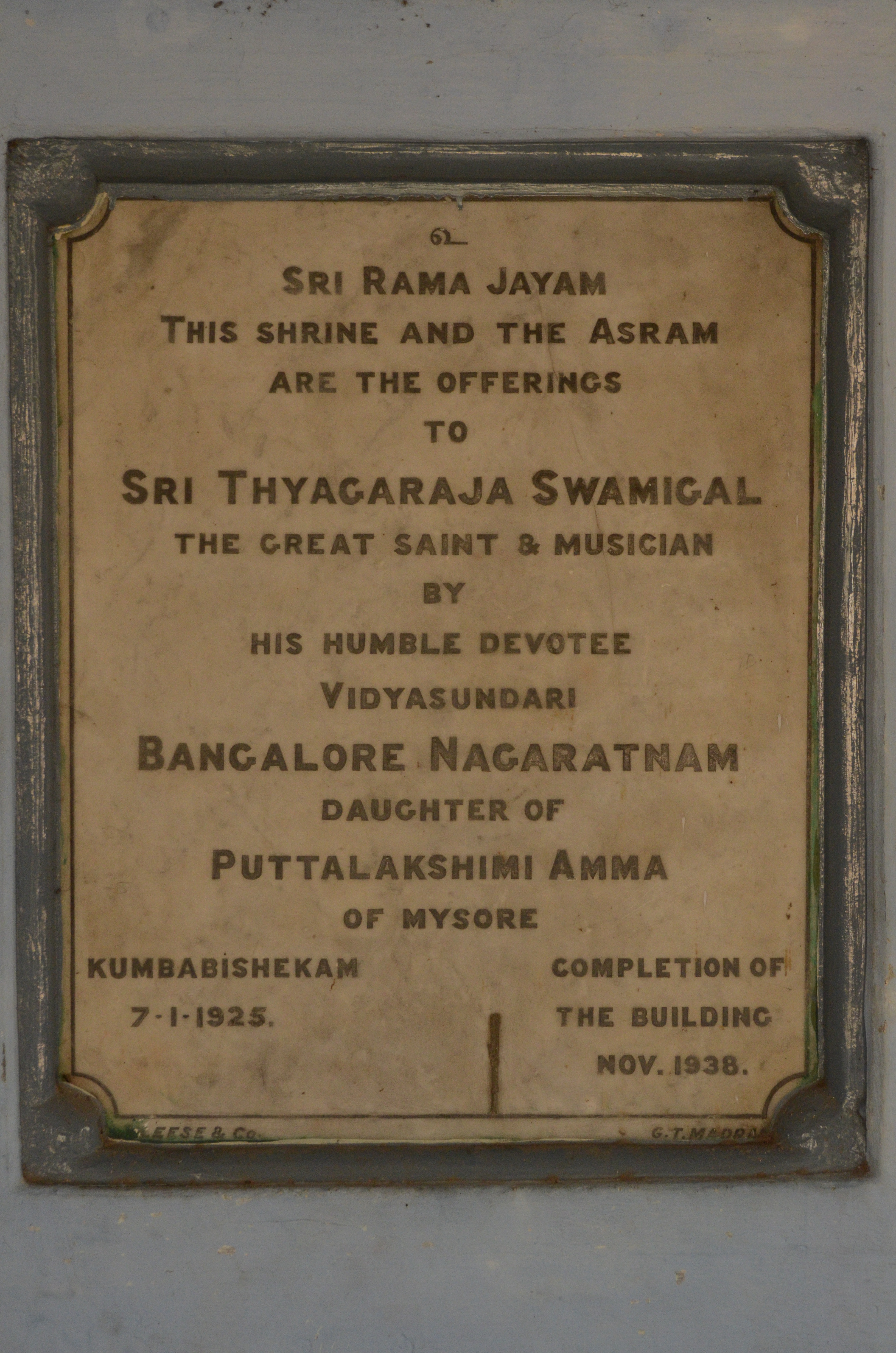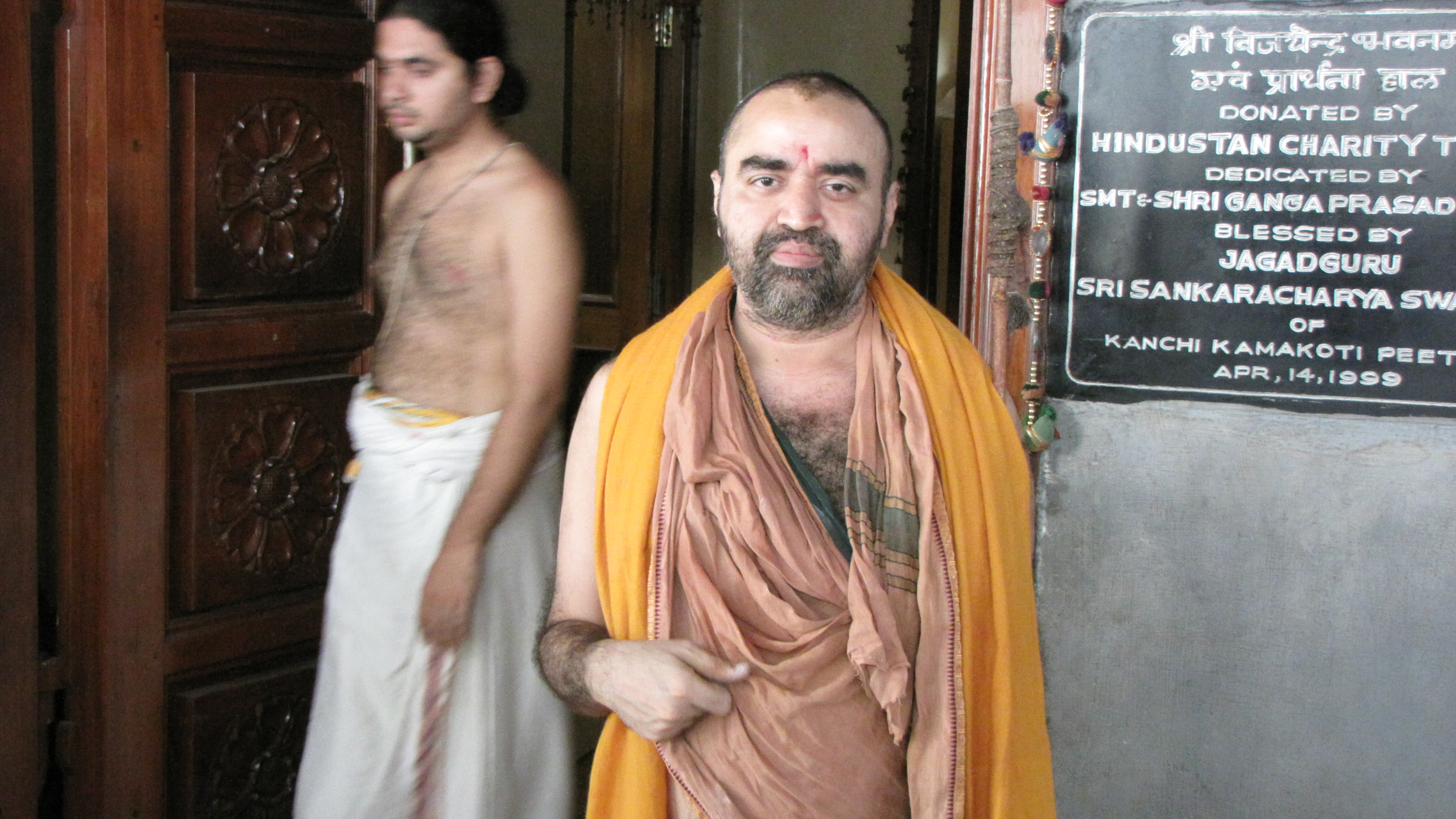|
Asthana Vidushi
Asthana Vidushi is an honorary title bestowed to a court musician or dancer in India. Notable Asthana Vidushis include Bangalore Nagarathnamma, Aruna Sairam, Bombay Sisters, M. S. Sheela, Geetha Raja, as well as Srirangam Gopalaratnam, Shobha Raju, and S. Sowmya. History Epigraphical records attest that courtesans who were well versed in 64 forms of arts were called Vaiseshikas, and many of whom have even donated their wealth to build temples. Courtesans who were proficient in dance were called the Raja Nartaki's or Royal Dancers and those who were highly proficient in music were given the title Asthana Vidhusi. They were given the title by the Royal houses where they would be obligated to perform in the celebrations held in the royal court. In the case of erstwhile Royal house of the Mysore Kingdom performing artists in music and dance considered it a unique honour to be recognized by the Royalty and given the title 'Asthana Vidushi' or Court dancer or musician. Such recognit ... [...More Info...] [...Related Items...] OR: [Wikipedia] [Google] [Baidu] |
Bangalore Nagarathnamma
Bangalore Nagarathnamma ( kn, ಬೆಂಗಳೂರು ನಾಗರತ್ನಮ್ಮ, te, బెంగుళూరు నాగరత్నమ్మ, ta, பெங்களூரு நாகரத்தினம்மா, sa, बेंगलुरु नागरत्नम्मा; 3 November 1878 – 19 May 1952) was an Indian Carnatic music, carnatic singer, cultural activist, scholar, and courtesan. A descendant of courtesans, she was also a patron of the arts and a historian. Nagarathnamma built a temple over the samadhi of the Carnatic singer Tyagaraja at Thiruvaiyaru and helped establish the Tyagaraja Aradhana festival in his memory. Within a male dominated festival, she was the feminist aggressive enough to ensure that women artists were given equality to participate in it. She "was among the last practitioners of the devadasi tradition in India," and the first president of the Association of the Devadasis of Madras Presidency. She also edited and published bo ... [...More Info...] [...Related Items...] OR: [Wikipedia] [Google] [Baidu] |
Tribe
The term tribe is used in many different contexts to refer to a category of human social group. The predominant worldwide usage of the term in English language, English is in the discipline of anthropology. This definition is contested, in part due to conflicting theoretical understandings of social and kinship structures, and also reflecting the problematic application of this concept to extremely diverse human societies. The concept is often contrasted by anthropologists with other social and kinship groups, being hierarchically larger than a lineage or clan, but smaller than a chiefdom, nation or state (polity), state. These terms are equally disputed. In some cases tribes have legal recognition and some degree of political autonomy from national or federal government, but this legalistic usage of the term may conflict with anthropological definitions. In the United States, Tribe (Native American), Native American tribes are legally considered to have "domestic dependent ... [...More Info...] [...Related Items...] OR: [Wikipedia] [Google] [Baidu] |
Kanchi Kamakoti Peetham
Sri Kanchi Kamakoti Peetham, also called the Sri Kanchi Matham or the Sri Kanchi Monastery or the Sarvagna Peetha, is a Hindu institution, located in Kanchipuram, Tamil Nadu. It is located near a temple dedicated to Goddess Sri Kamakshi (Durga, Kamakoti, Maha Tripurasundari) of the Shaktism tradition, along with a shrine for the Advaita Vedanta teacher Adi Shankara. The matha-tradition attributes its founding to Adi Shankara, but this and the reliability of the matha's succession list has been questioned. The Kanchi Math was originally established as the Kumbakonam Mutt in 1821 as a branch of the Sringeri Mutt, and later became involved with the Kamakshi temple in Kanchipuram. According to the Sri Kanchi math tradition, the matha was founded at Kanchipuram, and shifted south to the temple city of Kumbakonam in mid-18th-century due to the on-going wars, when there was warfare in the region, and returned to Kanchipuram in the 19th century. The matha is a living tradition, ... [...More Info...] [...Related Items...] OR: [Wikipedia] [Google] [Baidu] |
Prophet
In religion, a prophet or prophetess is an individual who is regarded as being in contact with a divine being and is said to speak on behalf of that being, serving as an intermediary with humanity by delivering messages or teachings from the supernatural source to other people. The message that the prophet conveys is called a prophecy. Claims of prophethood have existed in many cultures and religions throughout history, including Judaism, Christianity, Islam, ancient Greek religion, Zoroastrianism, Manichaeism, Hinduism , and many others. Etymology The English word ''prophet'' is the transliteration of a compound Greek word derived from ''pro'' (before/toward) and ''phesein'' (to tell); thus, a προφήτης (''prophḗtēs'') is someone who conveys messages from the divine to humans, including occasionally foretelling future events. In a different interpretation, it means advocate or speaker. In Hebrew, the word נָבִיא (''nāvî''), "spokesperson", traditionally t ... [...More Info...] [...Related Items...] OR: [Wikipedia] [Google] [Baidu] |
Bombay Sisters
The Bombay sisters, C. Saroja (b. 7 December 1936) and C. Lalitha (b. 26 August 1938), are a Carnatic music singing duo. Early life The Bombay Sisters, C. Saroja and C. Lalitha, were born in Trichur, Kerala to Mukthambal and N. Chidambaram Iyer. The sisters were brought up in Bombay. Saroja and Lalitha had their education in the S.I.E.S Matunga, passed their intermediate privately from Bhopal, M.P. and completed their graduation from Delhi University. They had their musical training with H. A. S. Mani, Musiri Subramania Iyer and T. K. Govinda Rao. After they were groomed in Carnatic Music in Mumbai, the sisters moved to Chennai. But a swami addressed them as 'Bombay Sahodarigal' and blessed them, and the name stuck. Saroja's husband Rajaram was the chief secretary of Lalit Kala Akademi, and Lalitha's husband Chandran was an advocate. The sisters credited their husbands in helping them to continue to perform together after they got married. Concert performances As part of ... [...More Info...] [...Related Items...] OR: [Wikipedia] [Google] [Baidu] |
Mutt (hinduism)
A ''matha'' (; sa, मठ, ), also written as ''math'', ''muth'', ''mutth'', ''mutt'', or ''mut'', is a Sanskrit word that means 'institute or college', and it also refers to a monastery in Hinduism.Matha Encyclopædia Britannica Online 2009 An alternative term for such a monastery is ''adheenam''. The earliest epigraphical evidence for ''mathas'' related to Hindu-temples comes from the 7th to 10th century CE. The most famous ''mathas'' or ''peethams'', which came to be affiliated with the Advaita tradition in the 14th century, are Govardhanmaṭha Pīṭhaṃ at |
The Hindu
''The Hindu'' is an Indian English-language daily newspaper owned by The Hindu Group, headquartered in Chennai, Tamil Nadu. It began as a weekly in 1878 and became a daily in 1889. It is one of the Indian newspapers of record and the second most circulated English-language newspaper in India, after '' The Times of India''. , ''The Hindu'' is published from 21 locations across 11 states of India. ''The Hindu'' has been a family-owned newspaper since 1905, when it was purchased by S. Kasturi Ranga Iyengar from the original founders. It is now jointly owned by Iyengar's descendants, referred to as the "Kasturi family", who serve as the directors of the holding company. The current chairperson of the group is Malini Parthasarathy, a great-granddaughter of Iyengar. Except for a period of about two years, when S. Varadarajan held the editorship of the newspaper, the editorial positions of the paper were always held by members of the family or held under their direction. Histo ... [...More Info...] [...Related Items...] OR: [Wikipedia] [Google] [Baidu] |
Tyagaraja
Thyagaraja (Telugu: త్యాగరాజ) (4 May 1767 – 6 January 1847), also known as Thyāgayya and in full as Kakarla Thyagabrahmam, was a composer and vocalist of Carnatic music, a form of Indian classical music. Tyagaraja and his contemporaries, Shyama Shastri and Muthuswami Dikshitar, are regarded as the Trinity of Carnatic music. Thyagaraja composed thousands of devotional compositions, most in Telugu and in praise of Lord Rama, many of which remain popular today, the most popular being "Nagumomu". Of special mention are five of his compositions called the ''Pancharatna Kritis'' ( "five gems"), which are often sung in programs in his honour, and ''Utsava Sampradaya Krithis'' ( Festive ritual compositions), which are often sung to accompany temple rituals. Tyagaraja lived through the reigns of four kings of the Maratha dynasty — Tulaja II (1763–1787), Amarasimha (1787–1798), Serfoji II (1798–1832) and Sivaji II (1832–1855), although he served none of ... [...More Info...] [...Related Items...] OR: [Wikipedia] [Google] [Baidu] |
Thyagaraja Aradhana
Tyagaraja Aradhana is an annual ''aradhana'' (a Sanskrit term meaning act of glorifying God or a person) of Telugu saint composer Tyagaraja. The music festival is observed in the states of Andhra Pradesh and Tamil Nadu, primarily in Tiruvaiyaru in Thanjavur district of Tamilnadu, the place where Tyagaraja attained Samadhi. The aradhana is observed on Pushya Bahula Panchami day when the saint attained samadhi, where the musicians render the saint's Pancharatna Kritis. History The ''aradhana'' (Ceremony of Adoration) is held every year on the anniversary of the demise of the saint. This is on Pushya Bahula Panchami day (the fifth day of the waning moon in the Hindu lunar month of ''Pushya''). The ''Aradhana'' is conducted by the Sri Thyagabrahma Mahotsava Sabha and is held in the precincts of the ''samadhi'' (memorial) of the saint located at Thiruvaiyaru village, Thanjavur district, Tamil Nadu, India. The Aradhana in its present format is not even a hundred years old. Tyagara ... [...More Info...] [...Related Items...] OR: [Wikipedia] [Google] [Baidu] |
Carnatic Music
Carnatic music, known as or in the Dravidian languages, South Indian languages, is a system of music commonly associated with South India, including the modern Indian states of Karnataka, Andhra Pradesh, Telangana, Kerala and Tamil Nadu, and Sri Lanka. It is one of two main subgenres of Indian classical music that evolved from ancient Hindu Texts and traditions, particularly the Samaveda. The other subgenre being Hindustani music, which emerged as a distinct form because of Persian or Islamic influences from Northern India. The main emphasis in Carnatic music is on vocal music; most compositions are written to be sung, and even when played on instruments, they are meant to be performed in ''gāyaki'' (singing) style. Although there are stylistic differences, the basic elements of (the relative musical pitch), (the musical sound of a single note), (the mode or melodic formulæ), and (the rhythmic cycles) form the foundation of improvisation and composition in both Carnati ... [...More Info...] [...Related Items...] OR: [Wikipedia] [Google] [Baidu] |
Madras
Chennai (, ), formerly known as Madras ( the official name until 1996), is the capital city of Tamil Nadu, the southernmost Indian state. The largest city of the state in area and population, Chennai is located on the Coromandel Coast of the Bay of Bengal. According to the 2011 Indian census, Chennai is the sixth-most populous city in the country and forms the fourth-most populous urban agglomeration. The Greater Chennai Corporation is the civic body responsible for the city; it is the oldest city corporation of India, established in 1688—the second oldest in the world after London. The city of Chennai is coterminous with Chennai district, which together with the adjoining suburbs constitutes the Chennai Metropolitan Area, the List of urban areas by population, 36th-largest urban area in the world by population and one of the largest metropolitan economies of India. The traditional and de facto gateway of South India, Chennai is among the most-visited Indian cities by f ... [...More Info...] [...Related Items...] OR: [Wikipedia] [Google] [Baidu] |



.jpg)




